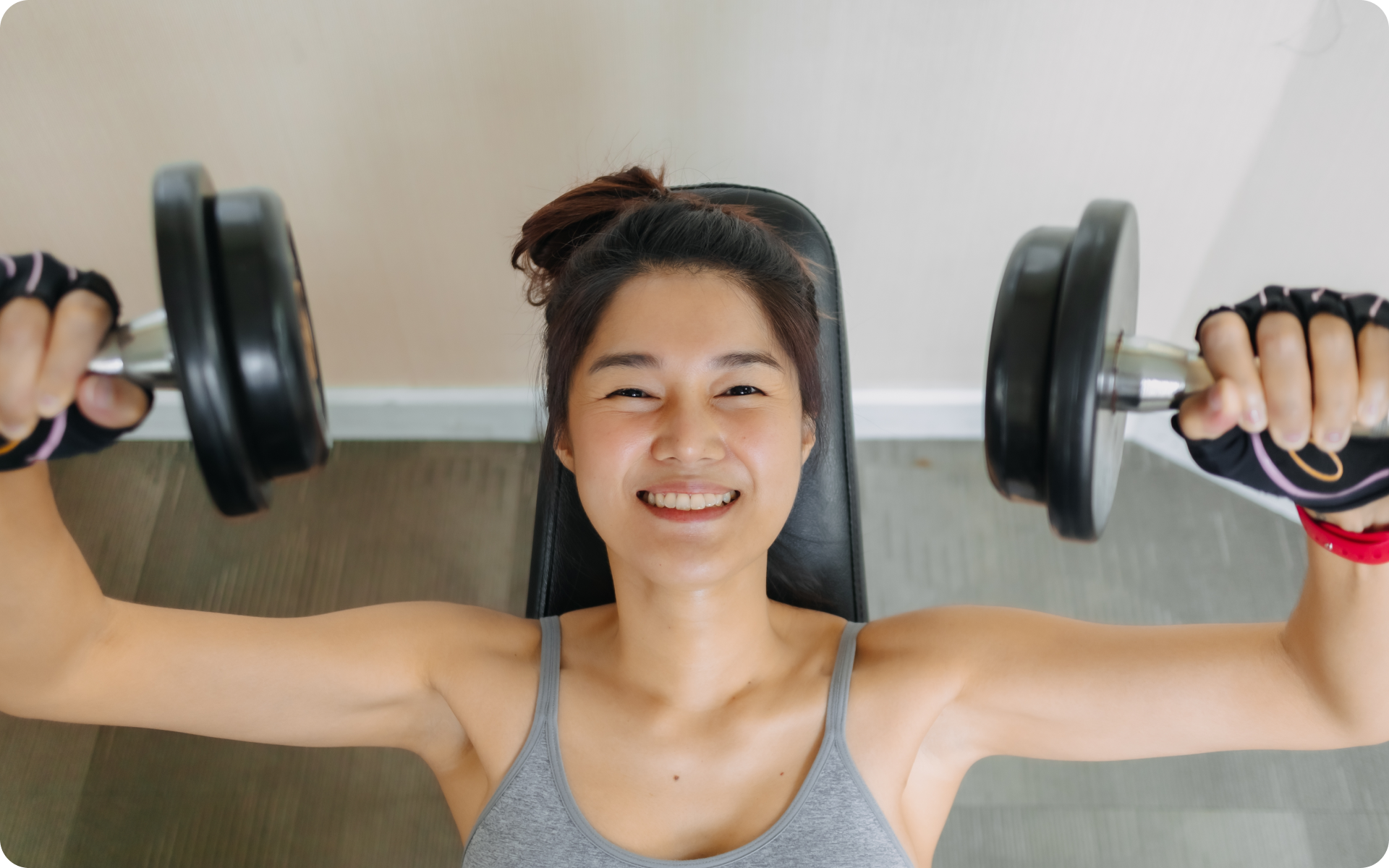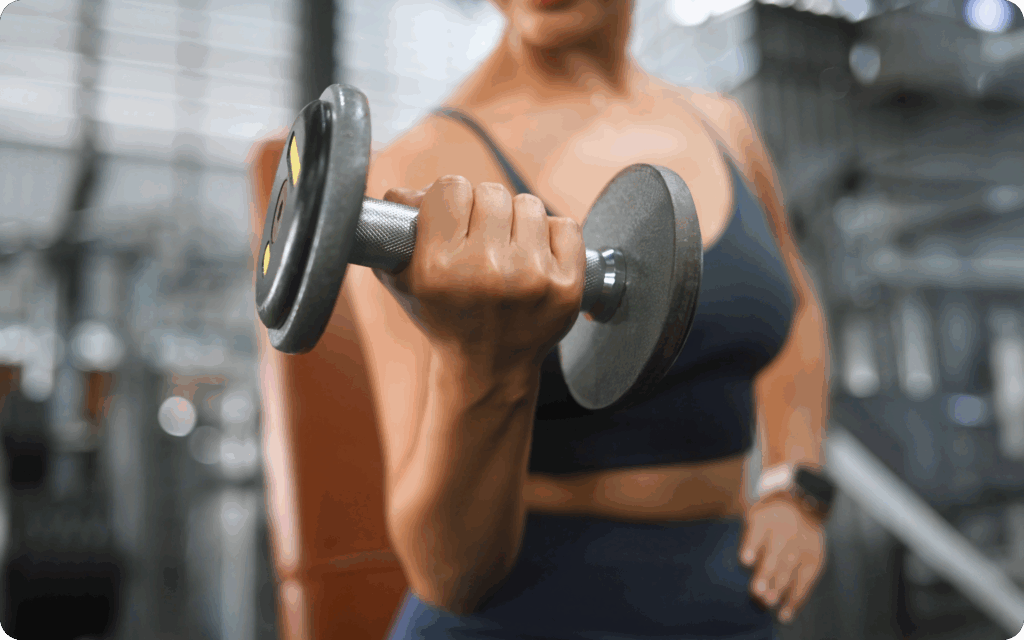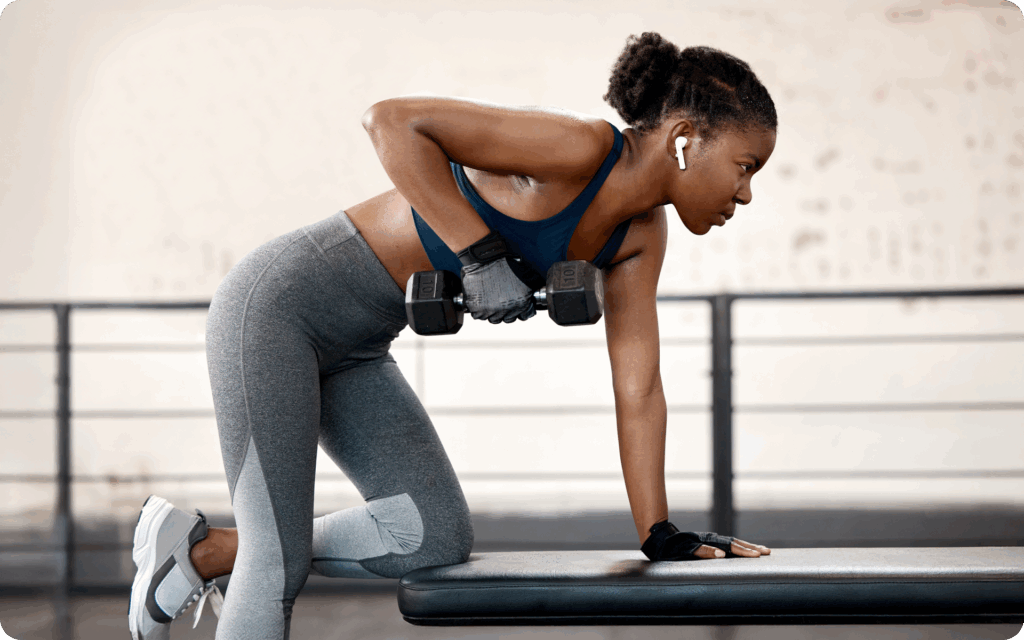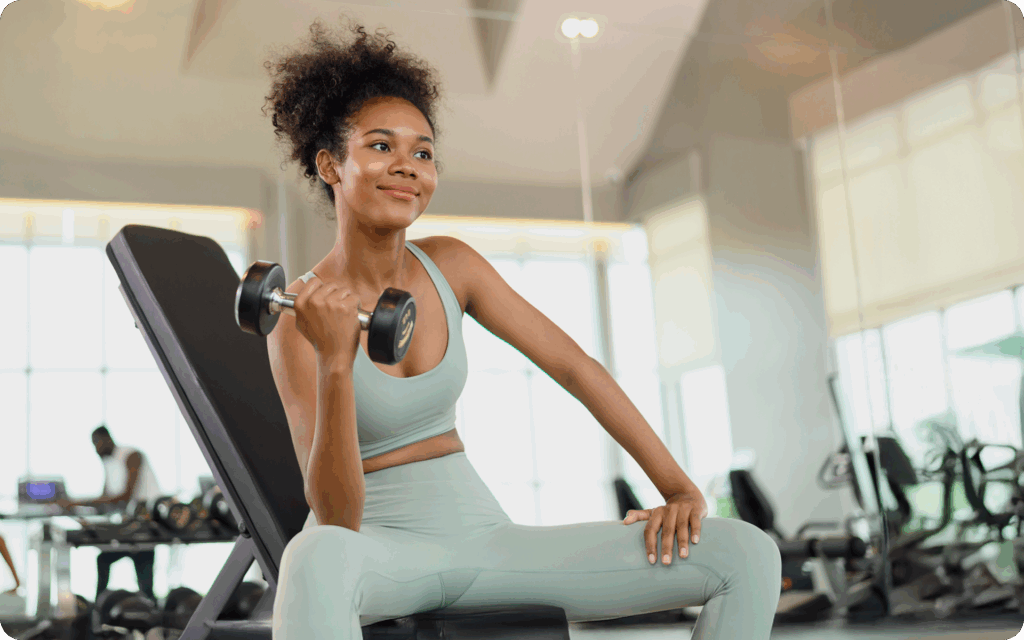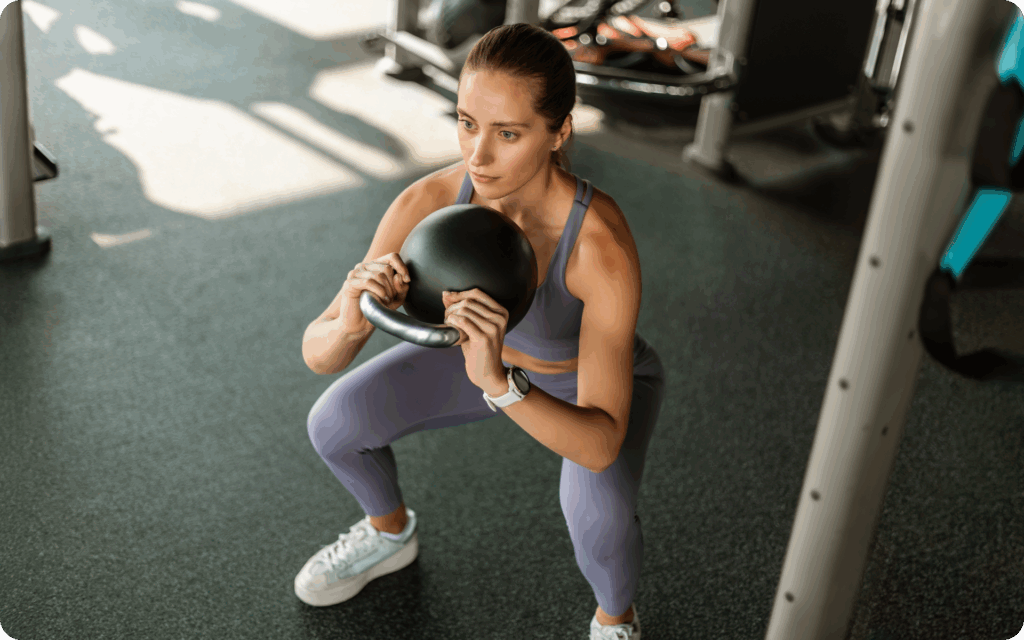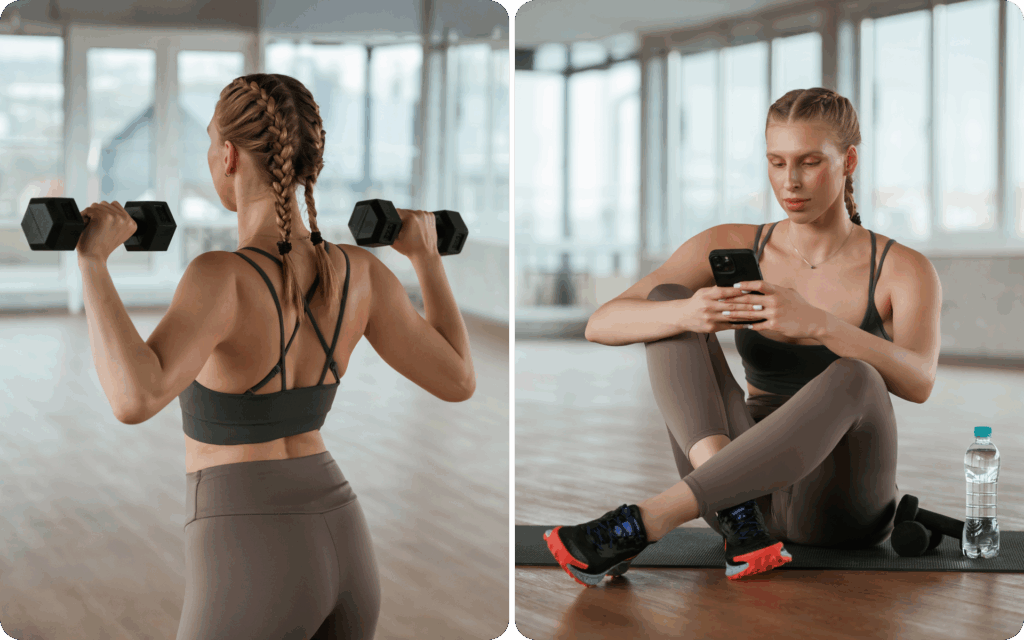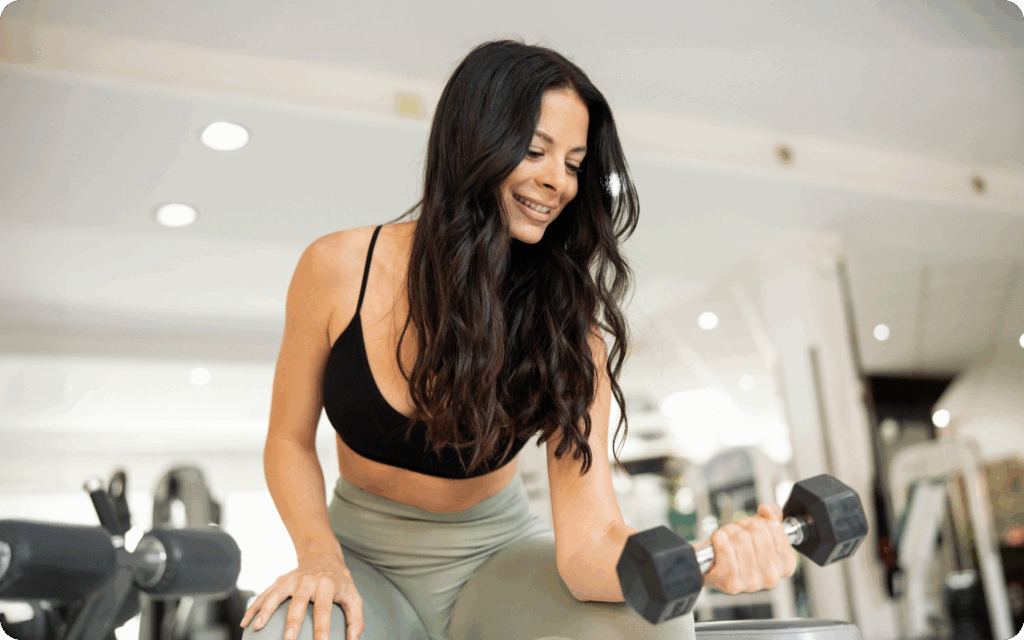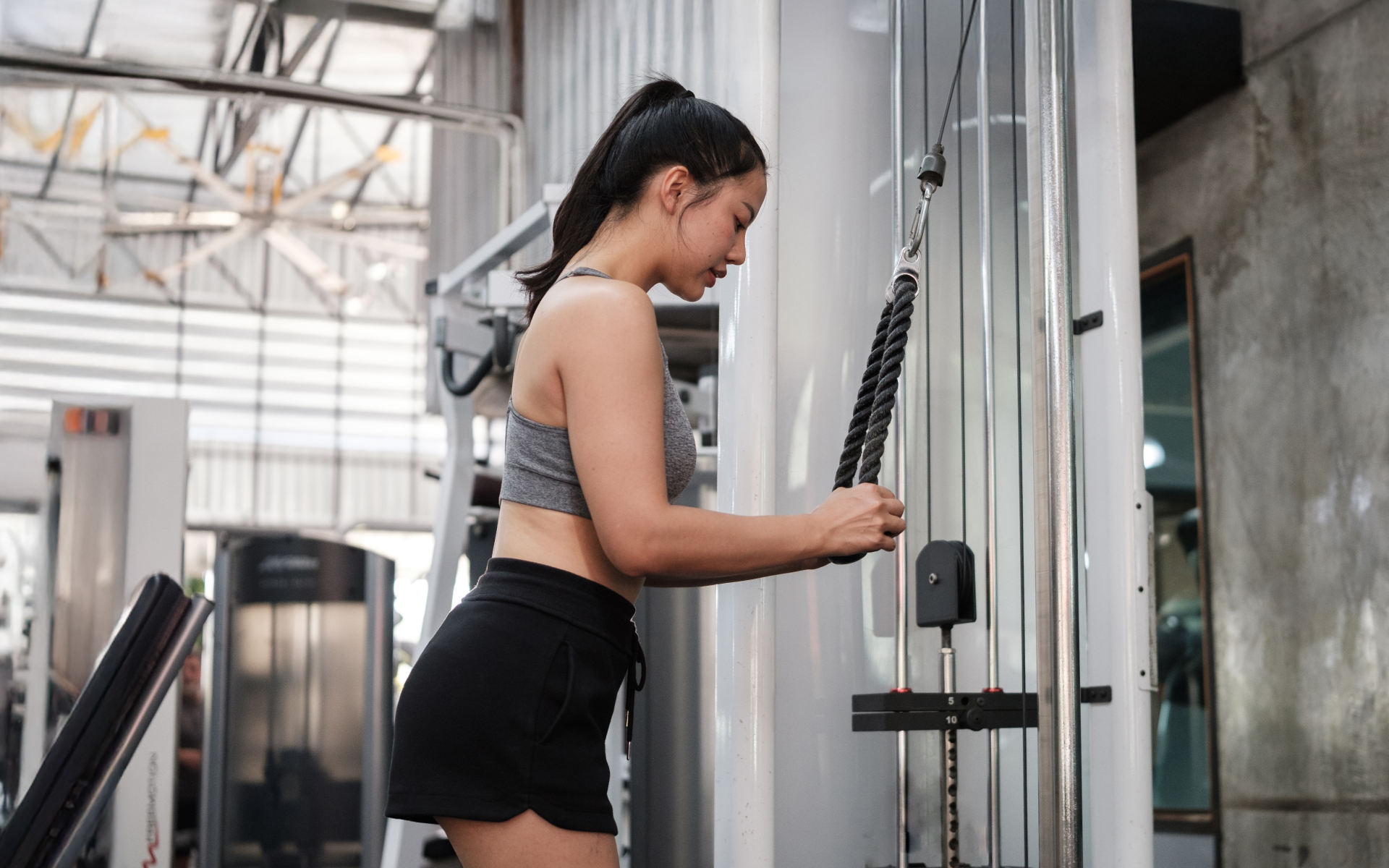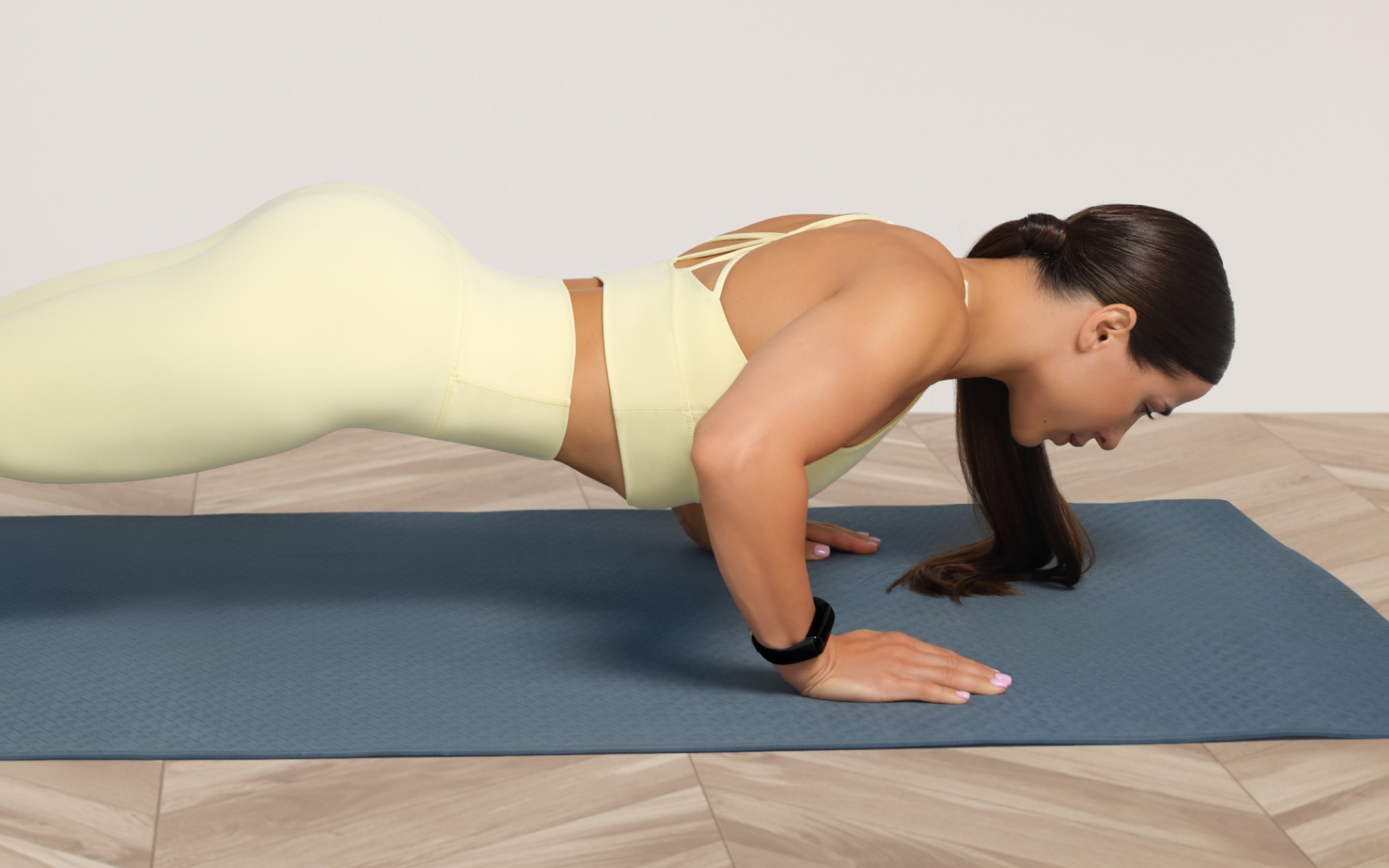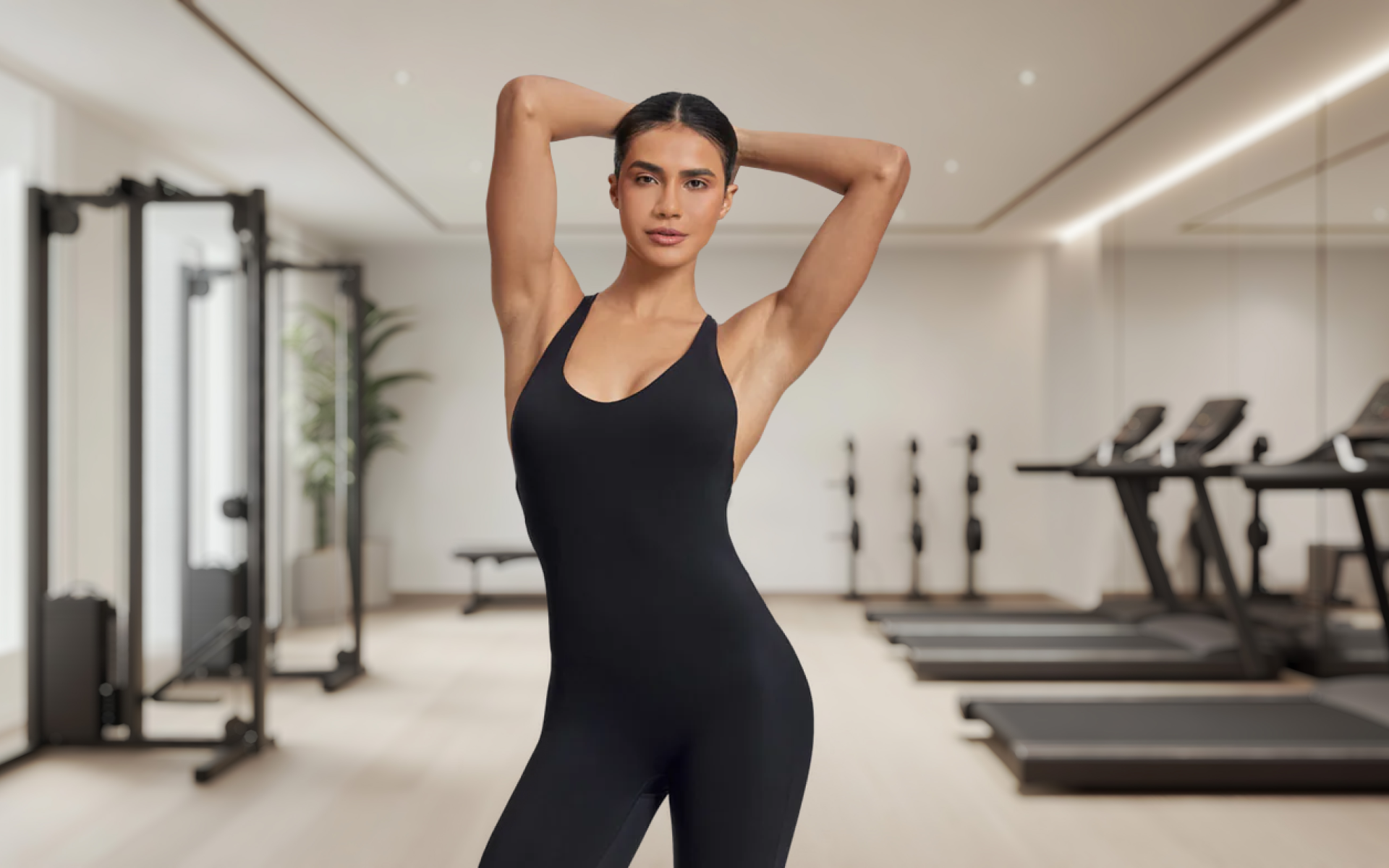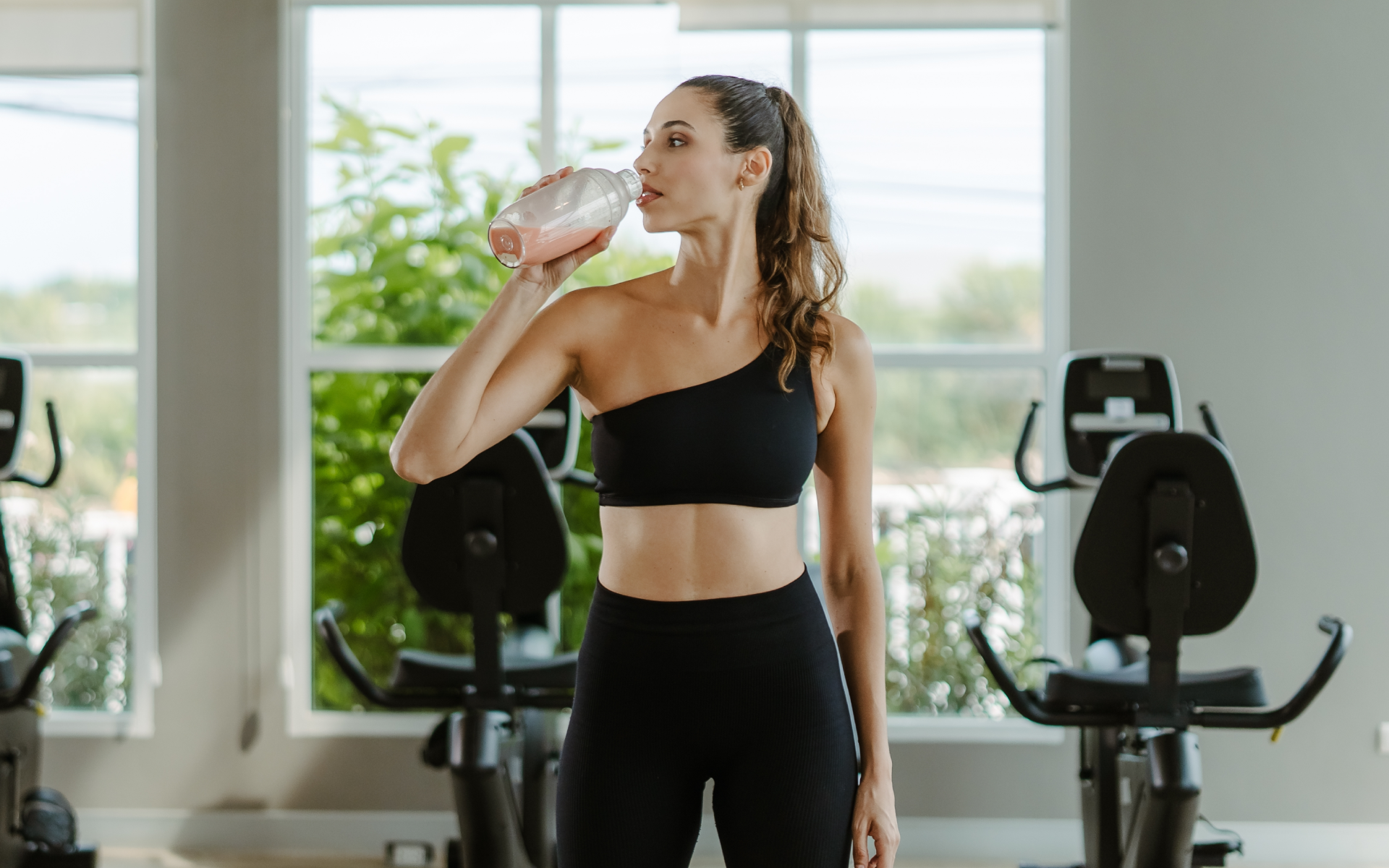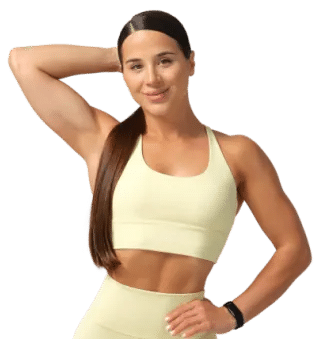For many beginners, the idea of navigating a fully equipped gym or investing in an array of workout machines can feel overwhelming. A minimalist approach to training is highly welcome – think only a pair of dumbbells and a bench.
Dumbbells offer a level of versatility that few other tools can match, which allows for a wide range of exercises that target every major muscle group. At the same time, a bench provides the support and stability that are needed to perform these movements safely and efficiently. Together, they create a workout system that is adaptable to any fitness level, space, or goal.
In this article, we’ll explore the ins and outs of a dumbbell and bench workout plan designed specifically for beginners. You’ll learn how to structure your sessions, perform key exercises with proper form, and progress at a pace that is aligned with your individual needs.
Can You Work Out with Just Dumbbells and a Bench?
You can create an effective workout routine using just dumbbells and a bench. From a scientific and practical perspective, these two tools offer a surprising amount of versatility, which makes them a solid foundation for a well-rounded fitness program.
Dumbbells allow for a wide range of motion, which is essential for engaging stabilizing muscles and improving joint health. Unlike machines, which often lock you into a fixed path of movement, dumbbells require your body to control the weight through multiple planes of motion. This builds strength and also enhances coordination and balance – key components of functional fitness.
A bench complements this by providing support and enabling a variety of exercises that target different muscle groups. For example, you can perform chest presses, rows, and step-ups, all of which are foundational movements in strength training.
The bench also allows for modifications, such as incline or decline positions, which can shift the emphasis to different parts of a muscle group, adding variety and progression to your workouts.
From a beginner’s perspective, this setup is particularly advantageous. It simplifies the training process, reduces the intimidation factor of complex equipment, and focuses on mastering fundamental movement patterns. These patterns – push, pull, hinge, squat, and carry – are the building blocks of any effective fitness program and can all be trained with dumbbells and a bench.
BetterMe: Health Coaching app helps you achieve your body goals with ease and efficiency by helping to choose proper meal plans and effective workouts. Start using our app and you will see good results in a short time.
Can You Build a Full Body with Just Dumbbells and a Bench?
Yes, you can absolutely build a full-body workout routine – and even a well-balanced physique – using just dumbbells and a bench. The key lies in understanding how to target all major muscle groups effectively and progressively.
A full-body workout typically involves exercises that engage the upper body, lower body, and core. With dumbbells and a bench, you can achieve this through a combination of compound movements (which work multiple muscle groups at once) and isolation exercises (which focus on specific muscles). Dumbbell workouts with a bench include:
- Upper Body: Dumbbell bench presses, rows, shoulder presses, and bicep curls.
- Lower Body: Goblet squats, lunges, step-ups, and Romanian deadlifts.
- Core: Weighted sit-ups, Russian twists, and dumbbell side bends.
The science of muscle adaptation to build physically larger muscles, which is known as hypertrophy, supports the idea that progressive overload – gradually increasing the weight, reps, or intensity of your exercises – is the primary driver of muscle growth (1, 2). Dumbbells are particularly well-suited for this, as they allow for incremental weight increases and variations in movement that keep your muscles challenged.
However, it’s important to note that while dumbbells and a bench can provide a comprehensive workout, they do have limitations. For example, they may not be ideal for developing maximal strength in advanced lifters, as heavier weights or specialized equipment like barbells might be required. In addition, certain movements, such as pull-ups or heavy squats, are difficult to replicate with this setup alone.
That being said, for beginners and even intermediate trainees, a dumbbell-and-bench routine can be more than sufficient to build strength, improve endurance, and enhance overall fitness.
Read more: The Complete Home Workout Plan for Female Beginners
Which Dumbbell Exercises Work Best on a Bench?
Below are 10 exercises to consider for your dumbbell and bench workout plan at home or at the gym:
1. Dumbbell Bench Press (Chest, Triceps, Shoulders)
This compound movement primarily targets the chest (pectoralis major) while engaging the triceps and anterior deltoids for support. The bench provides stability, which allows for a full range of motion.
Steps:
- Lie flat on the bench with your feet firmly on the ground.
- Hold a dumbbell in each hand with your palms facing forward and position them at chest level.
- Press the dumbbells upward until your arms are fully extended, keeping your wrists neutral.
- Slowly lower the dumbbells back to the starting position.
- Repeat for the desired number of reps.
2. Dumbbell Incline Press (Upper Chest, Shoulders, Triceps)
By setting the bench to an incline (30-45 degrees), this variation shifts the emphasis to the upper chest and anterior deltoids.
Steps:
- Adjust the bench to an incline position and lie back with dumbbells in your hands.
- Start with the dumbbells at chest level with your palms facing forward.
- Press the dumbbells upward and slightly together, fully extending your arms.
- Lower the dumbbells slowly to the starting position.
- Repeat.
3. Dumbbell One-Arm Row (Back, Biceps, Core)
This unilateral exercise targets the lats, traps, and rhomboids while engaging the core for stability. The bench supports your body, isolating the pulling motion.
Steps:
- Place your left knee and hand on the bench for support, keeping your back flat.
- Hold a dumbbell in your right hand with your arm fully extended toward the floor.
- Pull the dumbbell toward your torso, keeping your elbow close to your body.
- Lower the dumbbell back to the starting position.
- Switch sides and repeat.
4. Dumbbell Bulgarian Split Squat (Quads, Glutes, Hamstrings)
Using the bench for rear-foot elevation increases the range of motion, emphasizing the quads and glutes while improving balance and stability.
Steps:
- Stand a few feet in front of the bench and place the top of your left foot on it.
- Hold a dumbbell in each hand with your arms at your sides.
- Lower your body into a lunge, keeping your front knee aligned with your toes.
- Push through your front heel to return to the starting position.
- Switch legs and repeat.
5. Dumbbell Step-Up (Quads, Glutes, Hamstrings)
This functional movement mimics climbing, targeting the lower body while improving unilateral strength and coordination.
Steps:
- Stand facing the bench, holding a dumbbell in each hand.
- Place your right foot on the bench and push through your heel to step up.
- Bring your left foot up to meet your right, then step back down.
- Alternate legs and repeat.
6. Dumbbell Seated Shoulder Press (Shoulders, Triceps)
Sitting on the bench stabilizes your core, which allows you to focus on pressing the dumbbells overhead to target the deltoids and triceps.
Steps:
- Sit on the bench with your back supported and your feet flat on the ground.
- Hold a dumbbell in each hand at shoulder height with your palms facing forward.
- Press the dumbbells upward until your arms are fully extended.
- Lower the dumbbells back to shoulder height.
- Repeat.
7. Dumbbell Chest Fly (Chest, Shoulders)
This isolation exercise stretches and contracts the chest muscles, focusing on the pectoralis major while engaging the shoulders for stability.
Steps:
- Lie flat on the bench with a dumbbell in each hand, your arms extended above your chest.
- Slowly lower the dumbbells in an arc, keeping a slight bend in your elbows.
- Stop when your arms are parallel to the floor, then bring the dumbbells back together.
- Repeat.
8. Dumbbell Reverse Fly (Rear Delts, Upper Back)
This movement targets the rear deltoids and upper back muscles, which improves posture and shoulder stability.
Steps:
- Sit on the edge of the bench, leaning forward slightly with a dumbbell in each hand.
- Let your arms hang down, your palms facing each other.
- Lift the dumbbells outward in a wide arc until they’re at shoulder height.
- Lower the dumbbells back to the starting position.
- Repeat.
9. Dumbbell Skull Crushers (Triceps)
This isolation exercise focuses on the triceps, with the bench providing support for controlled elbow extension.
Whether you’re a workout beast or just a beginner making your first foray into the world of fitness and dieting – BetterMe has a lot to offer to both newbies and experts! Install the app and experience the versatility first-hand!
Steps:
- Lie flat on the bench with a dumbbell in each hand, your arms extended above your chest.
- Bend your elbows to lower the dumbbells toward your forehead.
- Extend your arms to return to the starting position.
- Repeat.
10. Dumbbell Side Plank Row (Core, Back, Shoulders)
Combining a side plank with a row challenges core stability while targeting the lats and shoulders.
Steps:
- Get into a side plank position with your right forearm on the bench and a dumbbell in your left hand.
- Keep your body straight and row the dumbbell toward your torso.
- Lower the dumbbell back to the starting position.
- Switch sides and repeat.
What’s the Best Dumbbell and Bench Workout Split?
The best workout split depends on your goals, schedule, and recovery capacity. Some common splits that work well with a dumbbell-and-bench setup include:
- Full-Body Split
Overview: This split targets all major muscle groups in a single session, performed 2-3 times per week. It’s ideal for beginners or those who have limited time.
Example Schedule: Monday, Wednesday, Friday.
- Upper/Lower Split
Overview: This split alternates between upper-body and lower-body workouts, which allows for more focused volume per session. It’s great for intermediate trainees.
Example Schedule: Monday (upper), Tuesday (lower), Thursday (upper), Friday (lower).
- Muscle Group Split
Overview: Each session focuses on a specific muscle group (e.g. chest, back, legs, shoulders, arms). This is common among advanced lifters aiming for hypertrophy (which refers to growing physical muscle size).
Example Schedule: Monday (chest), Tuesday (back), Wednesday (legs), Thursday (shoulders), Friday (arms).
- Hybrid Split
Overview: Combines elements of different splits, such as full-body sessions with additional focus days for weak points. This is a flexible option for those with varied goals.
Example Schedule: Monday (full body), Wednesday (upper body), Friday (lower body), Saturday (core/conditioning).
- Push/Pull/Legs Split
Overview: This split divides workouts into pushing movements (chest, shoulders, triceps), pulling movements (back, biceps), and leg exercises. It’s a balanced option for those training 5-6 days per week.
Example Schedule: Monday (push), Tuesday (pull), Wednesday (legs), Thursday (rest), Friday (push), Saturday (pull), Sunday (legs).
Check out our previous guide to find out what a typical push day dumbbell workout should look like.
What Is a Balanced Dumbbell and Bench Workout Plan?
For beginners or those who are looking for a straightforward approach, a full-body split is an excellent choice. Here’s an example:
Full-Body Bench Dumbbell Workout Plan
Frequency: 3 days per week (e.g. Monday, Wednesday, Friday).
Rest Between Sets: 60-90 seconds for compound movements, 30-60 seconds for isolation exercises.
Warm-Up:
- 5–10 minutes of light cardio (e.g. brisk walking or cycling).
- Dynamic stretches (e.g. arm circles, leg swings, hip openers).
Workout:
- Dumbbell Bench Press – 3 sets of 10-12 reps.
- Dumbbell One-Arm Row – 3 sets of 10-12 reps per side.
- Dumbbell Bulgarian Split Squat – 3 sets of 8-10 reps per leg.
- Dumbbell Seated Shoulder Press – 3 sets of 10-12 reps.
- Dumbbell Step-Up – 3 sets of 10 reps per leg.
- Dumbbell Chest Fly – 2 sets of 12-15 reps.
- Dumbbell Reverse Fly – 2 sets of 12-15 reps.
- Dumbbell Side Plank Row – 2 sets of 10-12 reps per side.
Cool-Down:
- 5 minutes of static stretching (e.g. hamstring stretch, chest opener, child’s pose).
This plan ensures balanced development across all major muscle groups while keeping the volume manageable for recovery. As you progress, you can increase the weight, add more sets, or incorporate advanced variations to continue challenging your body.
Read more: Easy Home Workout Plan for Women: Exercises, Tips, and FAQs
How Many Exercises per Session with Dumbbells and a Bench?
The number of exercises you should include in a session depends on your fitness level, goals, and the time you have available. However, as a general guideline, 6-8 exercises per session is a balanced and effective range for most individuals. This allows you to target all the major muscle groups without overloading your body or compromising form due to fatigue.
Here’s how to structure your session:
1. Start with Compound Movements (2-3 Exercises)
Compound exercises, such as the dumbbell bench press or Bulgarian split squat, engage multiple muscle groups and should form the foundation of your workout. These movements are energy-intensive and should be performed early in the session when you’re freshest.
2. Add Isolation Exercises (2-3 Exercises)
Isolation exercises, such as the dumbbell chest fly or reverse fly, focus on specific muscles. These are great for refining strength and addressing any imbalances. They’re typically less taxing and can follow your compound lifts.
3. Include Core or Stability Work (1-2 Exercises)
Finish your session with core-focused movements such as the dumbbell side plank row or stability exercises. These strengthen your midsection and also improve overall balance and control, which are essential for functional fitness.
Example Breakdown
- 2–3 Compound Exercises: Focus on large muscle groups (e.g. chest, back, legs).
- 2–3 Isolation Exercises: Target smaller muscles (e.g. shoulders, arms).
- 1–2 Core/Stability Exercises: Enhance core strength and balance.
Always prioritize quality over quantity – performing fewer exercises with proper form is far more effective than rushing through a longer list.
Note: Sometimes switching up the order of exercises in your program can build your muscles in a different way, which can make you more resilient and less prone to injury.
Absolutely. The dumbbell bench press is a highly effective alternative to the barbell bench press. It allows for a greater range of motion, which can lead to improved muscle activation in the chest, shoulders, and triceps. In addition, dumbbells help address muscle imbalances by requiring each arm to work independently. Explore bench workouts you can add to your workout plan in our previous post. Yes, you can gain muscle with only dumbbells. Muscle growth, or hypertrophy, is driven by progressive overload – gradually increasing the weight, reps, or intensity of your exercises (3). Dumbbells are highly effective for this, as they allow for a full range of motion, engage stabilizing muscles, and can be used for both compound and isolation movements. Not necessarily. While lowering the dumbbells close to your chest ensures a full range of motion, they don’t need to physically touch your chest. Stopping just above the chest helps maintain tension on the muscles and reduces the risk of shoulder strain, particularly if you lack mobility or are using heavy weights. Check out our guide chest workout with dumbbells to learn how to safely get a ripped chest. Yes, the incline bench press is generally harder than the flat bench press. The incline position shifts the emphasis to the upper chest and shoulders, which are typically less developed and weaker than the mid-chest muscles. This increased demand on smaller muscle groups makes the movement more challenging.Frequently Asked Questions
Can I bench press with dumbbells?
Can I gain muscle with only dumbbells?
Should dumbbells touch the chest?
Is incline harder than flat bench?
The Bottom Line
A dumbbell and bench workout plan is a practical, versatile, and effective approach to achieving a balanced physique. Whether you’re a beginner who is looking to master foundational movements or an experienced lifter who is seeking a minimalist yet impactful routine, this setup offers everything you need to target all major muscle groups. By focusing on proper form, progressive overload, and a balanced workout structure, you can unlock the full potential of these simple tools.
DISCLAIMER:
This article is intended for general informational purposes only and does not serve to address individual circumstances. It is not a substitute for professional advice or help and should not be relied on for making any kind of decision-making. Any action taken as a direct or indirect result of the information in this article is entirely at your own risk and is your sole responsibility.
BetterMe, its content staff, and its medical advisors accept no responsibility for inaccuracies, errors, misstatements, inconsistencies, or omissions and specifically disclaim any liability, loss or risk, personal, professional or otherwise, which may be incurred as a consequence, directly or indirectly, of the use and/or application of any content.
You should always seek the advice of your physician or other qualified health provider with any questions you may have regarding a medical condition or your specific situation. Never disregard professional medical advice or delay seeking it because of BetterMe content. If you suspect or think you may have a medical emergency, call your doctor.
SOURCES:
- Sports Training Principles (2019, journals.lww.com)
- Maximizing Muscle Hypertrophy: A Systematic Review of Advanced Resistance Training Techniques and Methods (2019, pmc.ncbi.nlm.nih.gov)
- Progressive Overload Explained: Grow Muscle & Strength Today (n.d., blog.nasm.org)
